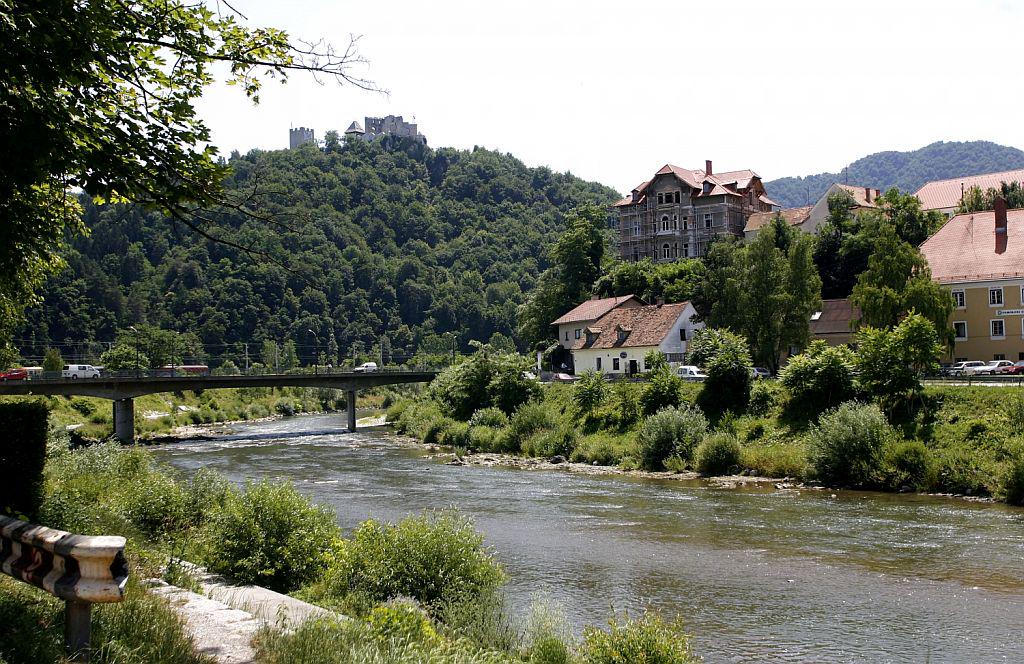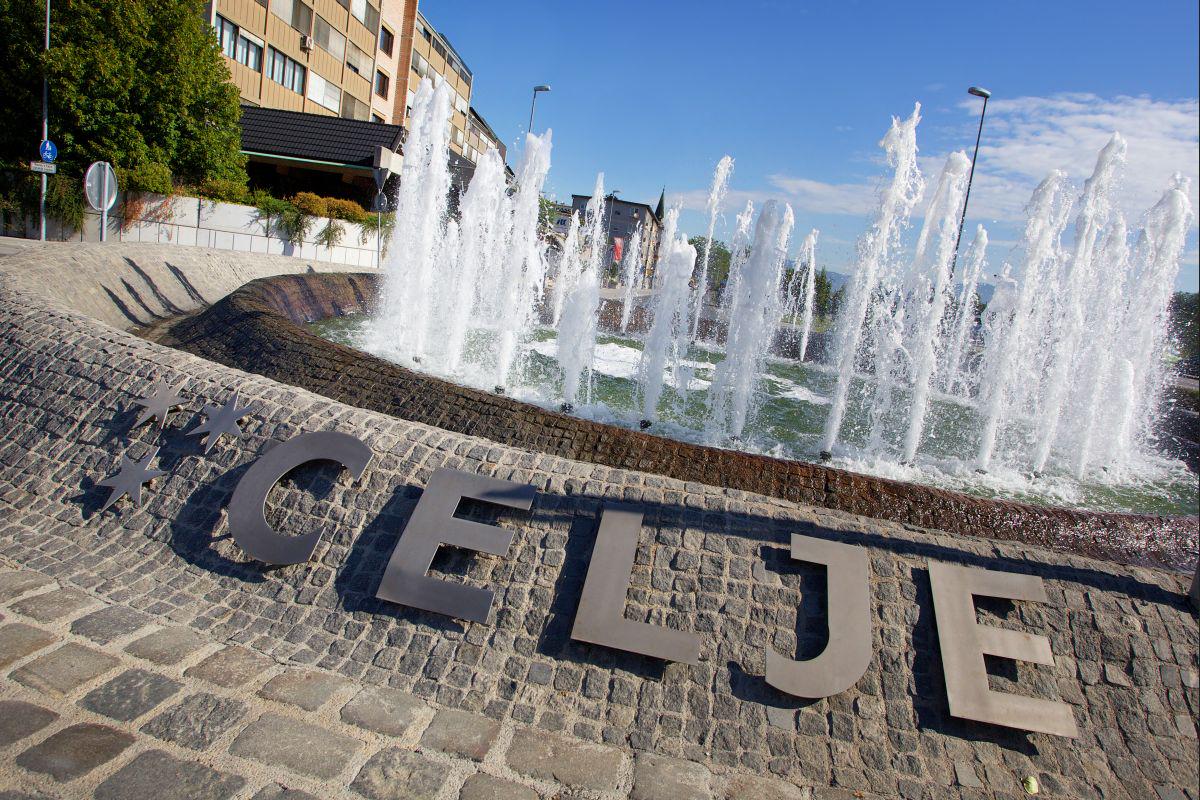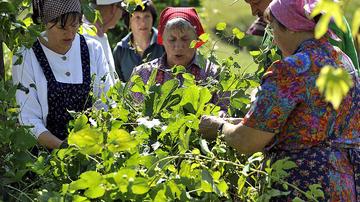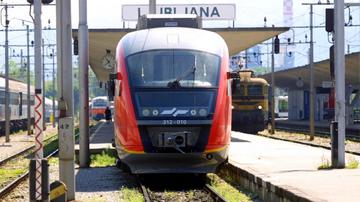

The history of the third largest city in Slovenia is inextricably linked with water. Celje, first mentioned as the Celtic Keleia, was actually built on water. Settlers were attracted by the area’s fertile fields, but it was swampy and subject to continual flooding dueto the wide river basin of the Savinja, which eventually flows into a narrow valley towards Laško. Around the year 270, the Roman Celeia was struck by a severe flood, which led to ther relocation of the riverbed of the Savinja almost one kilometre towards the Miklavž Hill, where it still flows today. Floods are one of the most persistent nightmares for the people of Celje. It is a problem and irritation they hope to resolve once and for all with the recently implemented flood measures and regulation of the Savinja and its tributaries.
The Savinja once had a great impact on the everyday life in Celje, particularly through timber rafting, the laundering and drying of washing on its banks. In the second half of the 19th century, the river provided a great impetus to tourism. At that time, Celje was building its attractive image particularly thanks to the crystal clear Savinja. Printed tourist guides gave Celje a new name: the jewel on the Savinja. In addition to the famous history of the Roman period and the counts and princes of Celje, it was the water that attracted foreigners to the city. Many new bathing areas were organised on the edge of the city park after 1870, which obtained a common name, the Savinja baths. In the summer months, the city next to the crystal clear Savinja attracted to the water locals and foreigners, who were seeking refreshment in the river.
Due to the then prevailing code of morality, the bathing areas were separated for women and men and glances over wooden fences were considered vices. In the period when a tense national situation prevailed, which separated Celje and its people in two, the bathing areas were also divided into German and Slovenian ones. The social life in Celje in the 1880s was also divided into male and female bathing sections along the Savinja. In 1899, Andrej Fekonja wrote: “These baths are a famous distinctive feature of Celje because they are the cheapest, very enjoyable and also healing ... both locals and foreigners come to cool down from the summer heat all day long; in the evening, you can see head next to a head bobbing in the water, and one can even say: Half of Celje is floating in the water.”
According to the experts, the river with its warm springs and current even had healing powers: “Experienced doctors claim that the Savinja baths have the same effect on people’s health as the baths in the nearby Dobrna and Laško health resorts. They have proved successful against gout, general weakness and are particularly beneficial for skin and nerves and accelerate general recuperation,” wrote Fekonja. The Savinja baths were once what many health resorts with their warm healing springs in the surrounding area are today, i.e. Laško, Dobrna, Rimske Toplice and Rogaška Slatina. But they were even more than that since they had their urban, once strongly developed township hinterland, which created a successful story with the river and recognised in it great potential.
Industrialisation of the city
The industrialisation of Celje located next to the Savinja, which ran parallel with the development of bathing tourism, severely interrupted this romantic image as the 19th century faded into the dawn of the 20th century. If the arrival of the Southern Railway to the city in 1846 (Celje will be celebrating the 170th anniversary this June) enabled the development of tourism, it even further accelerated the start of industrialisation, while also contributing to the direct and long-term degradation of the environment. With the development of industrialisation along the upper river basin, the Savinja flowed through Celje ever more brown and foamy and utterly unsuitable for bathing. The coal mines on the edge of the Savinja Valley contributed significantly to the pollution by coal washing, including the tannery in Šoštanj, from which parts of skin and hair would drift all the way downstream to Celje. The tributaries which flowed through the eastern highly industrialised part of Celje also became very affected by pollution, particularly the Hudinja and the Voglajna rivers. The latter river was renamed the “Black Nile” by the Celje newspaper, Nova doba, in the 1930s.
The situation has changed only in the recent decades and life in Celje, which previously deviated away, has now moved closer to the water again. A long and beautifully-kept promenade gives a buzz to that part of Celje where city and river converge, and a new bridge for pedestrians and cyclists was constructed last year between the newly renovated library and sports surfaces in the city park. In the summer, a special vibe is created at the city beach, where the partnership of the Historical Archives Celje, the Celje Museum of Recent History and the Celeia Institute of Cultural Events and Tourism last year prepared an outdoor panel exhibition, “The Savinja Baths”. This reminded us of the golden era of Celje bathing tourism and opened a new view of co-existence of the city with the river in the new era. The exhibition will be on display again in summer 2017.
Špica boathouse
The promenade is further supplemented by a modern building of the boathouse at Špica. The Špica boathouse is becoming a recognised event centre, where a growing number of keen swimmers take a swim in the ice-cold Savinja every 1 January. A new modern kayak and canoe centre was established with the boathouse, which has obtained numerous successes with local clubs, organisers of competitions and top young sportspeople. The soul of the club and the boathouse is Dušan Konda, who has many ideas for further development of life by the Savinja. His desire is to construct a movable iron hydraulic dam with several chambers upstream from Špica, which would enable the construction of an open Celje beach by the Savinja with an arranged large swimming area and all the necessary infrastructure, whereas a modern kayak course would be constructed downstream from the dam enabling the organisation of competitions at the highest level. With such ideas and projects, Celje may once again obtain the name it once proudly carried: the jewel on the Savinja River.
Borut Batagelj, Sinfo































































